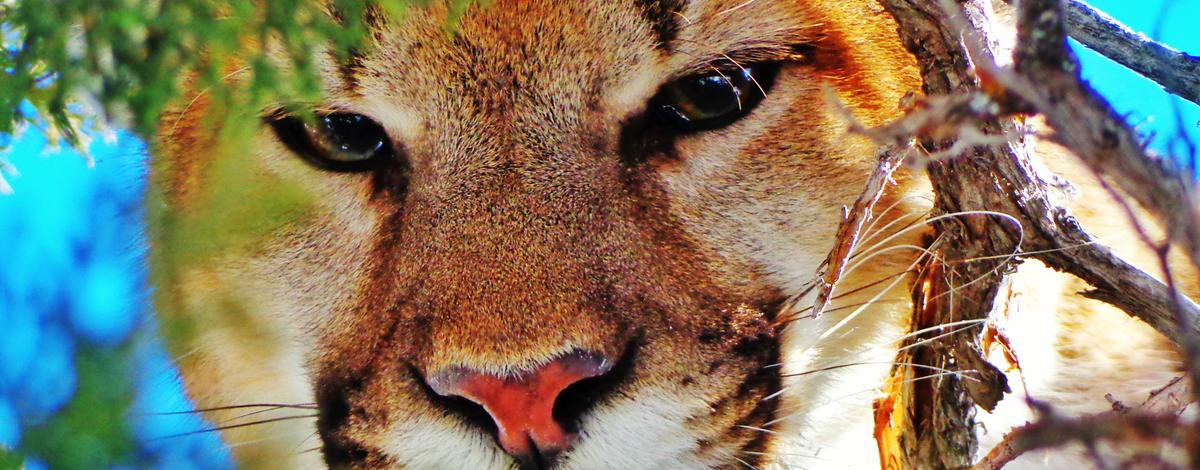Idaho Fish and Game staff in the Southwest Region received reports of a mountain lion in an Eagle neighborhood near Dry Creek on Aug. 20. Two doorbell security cameras, approximately a quarter-mile apart, captured footage of a mountain lion in the early hours of the morning.
There have been no reports of conflicts with people or pets. At this time, Fish and Game does not plan to trap or haze. However, officials are asking people in the area to take precautions and report any mountain lion sightings over the next few days.
“When we occasionally have mountain lions cross over into the urban side of that urban/wildland interface, it’s normal behavior for them to quickly move through – and ultimately out of – the area,” said Ryan Walrath, Southwest Region Wildlife Manager. “But when a sighting like this occurs, we want to make sure the lion has moved through, and not moved in. So we ask people in the area to keep an eye out and report additional sightings.”
Sightings and observations should be reported to the Fish and Game, Southwest Regional Office at (208) 465-8465 during business hours, 8 a.m. – 5 p.m. Monday – Friday. If after hours, reports can also be made to the Ada County Sheriff at (208) 377-6790.
While mountain lions are occasionally spotted in Treasure Valley and Eagle, it’s typically at the edges of towns and cities and in close proximity to the Foothills where mountain lions are commonly found, and river and creek basins like Dry Creek are classic “animal highways.”
Below are some safety tips and suggestions that Fish and Game recommends for everyone living in close proximity with mountain lions.
Personal safety
Though encounters between people and mountain lions are rare, here are some points to keep in mind if you encounter a mountain lion. Wildlife managers agree that if a person is in close proximity to a lion, meaning they see it, they should:
- NEVER run away from a mountain lion. The lion’s instinct is to chase and ultimately catch what they perceive as a potential prey.
- NEVER turn your back on a lion. Always face them while making yourself look as large as you can. Yell, but don’t scream. A high-pitched scream may mimic the sound of a wounded animal.
- SLOWLY back away while maintaining eye contact with the lion.
- Safety equipment you may choose to carry could include bear spray, a noise device, like an air horn, and if you walk in the dark, a very bright flashlight.
- If you are attacked, fight back!
Pet safety
Mountain lions are opportunistic predators, and will often attempt to take prey when it presents itself. A lion may perceive a pet as prey so pet owners are strongly encouraged to follow these safety tips:
- Keep your pets on a leash.
- Watch the pets’ behavior, since they may sense the lion before you can actually see them.
- Do not feed your pet outside, or leave their food dishes outside. Lions will not typically be attracted by the pet food, but the food could attract feral cats or wildlife like raccoons or skunks that could be considered prey by a lion.
- Before letting your pet outside, turn on lights, make noise and look to ensure the yard is clear of wildlife. Do not assume that a privacy fence will keep a mountain lion out of your yard.
- Accompany your pet outside if possible.
Homeowner safety
By nature, mountain lions are shy and will make every effort to avoid contact with humans. Homeowners can do several things to make it less likely that a mountain lion would pass through, or live near their homes and neighborhoods. These include:
- When leaving your house, be aware of your surroundings. Look and listen for signs of wildlife.
- Do not feed wildlife! Elk and deer are the preferred prey for mountain lions. Feeding is unnecessary and can concentrate elk and deer herds which can attract predators.
- Strongly encourage your neighbors to not feed elk and deer. To effectively keep predators out of neighborhoods everyone must do their part.
- Do not leave garbage outside and unsecured. Garbage will not typically attract a mountain lion, but it might attract other animals that would be considered prey.
- Ensure that a lion cannot crawl under your deck or into basement window wells, which could be a perfect place for a daybed.
- Install motion-sensor lights which may discourage wildlife from staying in your yard. Lights can be directed to minimize light impact on your neighbors.

